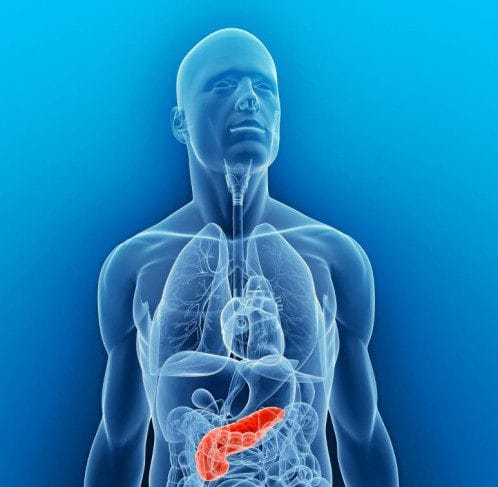Last Updated on March 9, 2021 by Editor Futurescope
The life of patients with type 1 diabetes, who depend on insulin injections to control their disease, could be made easier by the advances that scientists around the world are making to create an “artificial pancreas”; That is, a device capable of automatically controlling the levels of glucose in the blood.
The first step in this direction, has just been given by the FDA in the United States with the approval of the MiniMed 670G. It is an insulin pump that connects wirelessly with a subcutaneous sensor that measures the level of blood sugar, and is able to go in injecting the necessary doses of insulin automatically without the patient having to be aware of According to its manufacturer.
However, it is still necessary for the patient to estimate the amount of carbohydrate to be taken with meals to indicate to the pump and to compensate that intake, just as they have to do now with the punctures. “The first ‘closed hybrid loop‘ was recently approved by US regulatory authorities and will be around the world in 2018. When patients no longer need to advertise meals and how much exercise they do, the device will eventually allow automated control of the Glucose without the need for any patient intervention. This may take another five years, “Thomas Danne, director of the Department of General Pediatrics and Endocrinology at the Hannover School of Medicine.
According to the specialist, “improved glucose control reduces the risk of late complications of diabetes such as blindness, kidney failure and premature cardiovascular death.”
The goal of the artificial pancreas is to provide the insulin pumps with the intelligence they need to decide for themselves the amount of insulin just and necessary for a patient. Develop a proprietary safety algorithm to prevent hypoglycemia events from accumulating insulin.
The group has been working on the development of an artificial pancreas since 2011 and has carried out clinical trials of its algorithms in hospitals in Valencia and Barcelona (Spain). They are now planning to start clinical trials in the country using algorithms from the University of Virginia (USA) and their own.
Artificial pancreas will be able in 2018


Each year, more than million of people are diagnosed with type 1 diabetes in world wide. Most of them are minors. From the moment of diagnosis, the life of these patients depends on the correct administration of insulin, the substance that their organism is no longer able to generate by itself. The dose of drug depends on many factors: the amount of blood glucose in each moment, the carbohydrates consumed in the meal, the physical exercise … Diabetics have to learn to calculate on their own what the pancreas does of Natural way in healthy people: how much insulin is to be introduced into the bloodstream each time.
There are very advanced devices for measuring blood glucose and insulin pumps that administer the medication with great precision. But they are not autonomous, they need the patient’s exhaustive programming. For years it has dreamed of creating a closed system that puts the two devices in contact intelligently: a glucose meter determines the amount of blood sugar and sends its measurement to an insulin infuser that decides how much medicine to inject, without the need for intermediaries.
But the device has resisted becoming a reality, until now. Because, according to a study published in Diabetología (the official journal of the European Association of Diabetes), a closed system like this may be available in 2018. It is what they call artificial pancreas, the dream of any diabetic.
There are already sufficient clinical trials demonstrating the feasibility of this technology. Patients who have experimented with it have reported that the device gives them much more freedom and security. But it is still necessary to face some important challenges. One is the variability of the amount of insulin needed for a given patient. The same person may require one day a dose and the next day three more times or a third part depending on your diet or physical exercise.
The insulin correspondents used that do not act immediately on the body. Even fast-acting ones can take two to three hours to reach their peak. Any changes in the patient’s habits that occur in that period may require a correction. The patient learns to correct hyperglycemia or hypoglycemia derived from this variability. The artificial pancreas should also be programmed for this purpose.
Clinical trials to date (with patients at home or with children in summer camps, for example) have shown great effectiveness in this self-regulating insulin task. At present, more extensive studies (up to a year of use of the apparatus) are under way that aim to demonstrate that the technology is really safe. Not only in medical terms but even in computer terms. These devices depend on wireless connections. It is important to test that the technology is not going to fail at the most decisive moment because of a bad connection or, even though it seems less probable, that the data that the measuring and dispensing devices exchange, and that are part of the intimacy Clinic of the individual, will not be “stolen” by third parties.
The National Institute for Medical Research believes that if this is the case, this system could reach Europe’s markets in 2018. At the moment, users are optimistic in their tests because it gives them the possibility of forgetting Diabetes, by not having to constantly monitor the amount of blood sugar.
Taking into account all these conditions, experts believe that the artificial pancreas will soon be a cost-effective technology. Every medical device must obtain approval from agencies such as the FDA (Food and Drug Administration) before allowing its use in patients. In fact it is expected to be approved by the US FDA in late 2017 and by the European health authorities a few months later.
However, there are still many obstacles to overcome before patients with type 1 diabetes can benefit from the benefits of an artificial pancreas since these devices may be vulnerable to cyber security threats such as interference with wifi protocols or recovery of unauthorized data, “so we must ensure security protocols”.
This is where the artificial pancreas can most help, preventing patients themselves from having to take measurements constantly to check if they have too much blood sugar, or very little blood sugar, since it would be the device itself that would get this information on its own.







